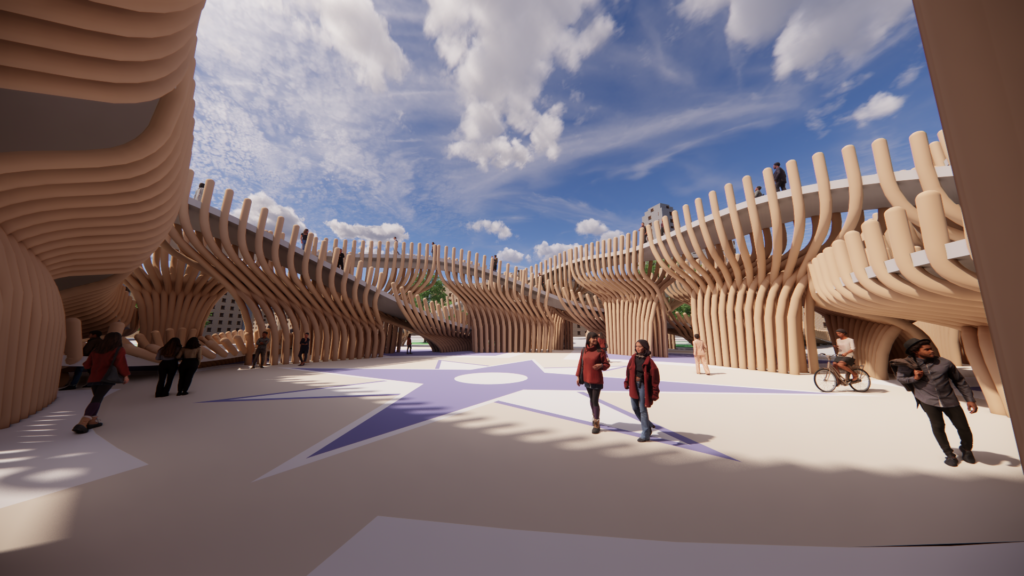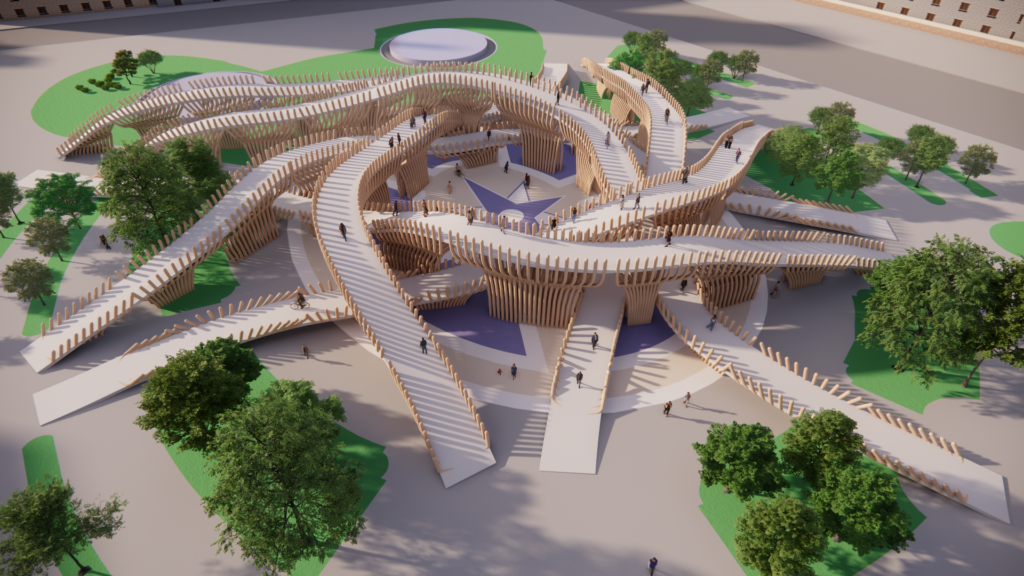Faculty– Rodrigo Aguirre & Akshay Madapura
Urban Convergence Pavilion project located on the Plaça de Catalunya which is a large square in central Barcelona. The geographical space that separates the districts of Ciutat Vella and the Eixample. Steeped in history, the Plaça de Catalunya is the nerve centre of the Catalan capital. The plaza, which was opened by King Alfonso XIII in 1927 and covers an area of 5 hectares, features several sculptures by well-known artists such as Clarà and Llimona. It was formerly an open piece of land located in front of the gates to the walled city and was planned by architects Pere Falqués, Puig i Cadafalch and Francesc de Paula Nebot. There are six sculptural groups around the plaza that represent the four Catalan capital cities, wisdom, and labour
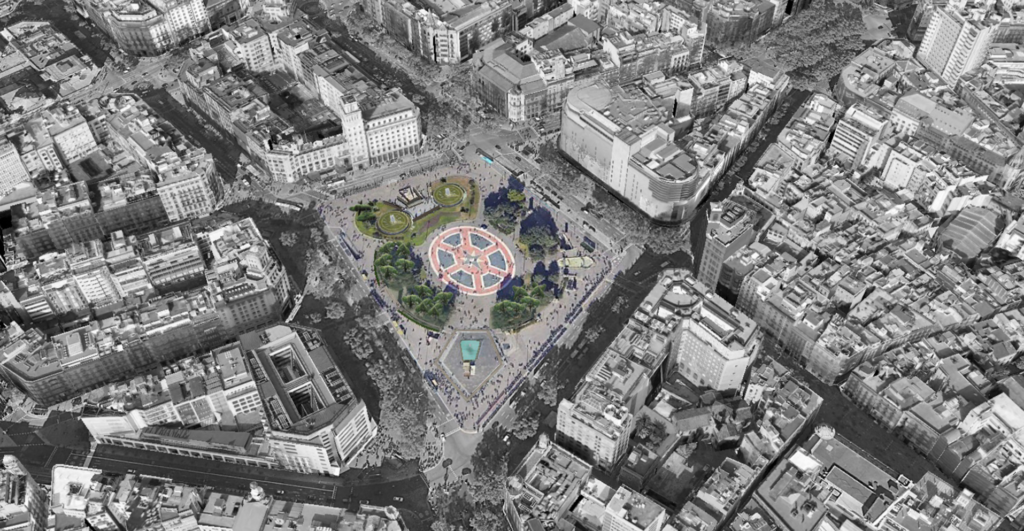
State of Arts
The Rising Path – CDC Studio
Arriving at the three-metre high viewpoint, visitors discover a stunning overview of the unique design of the Systematic Beds. The shape of the structure is an irregular spiral developed from a circular plan. Its distortion and rotation is a result of the structure avoiding tree roots, trunks and the University data infrastructure.
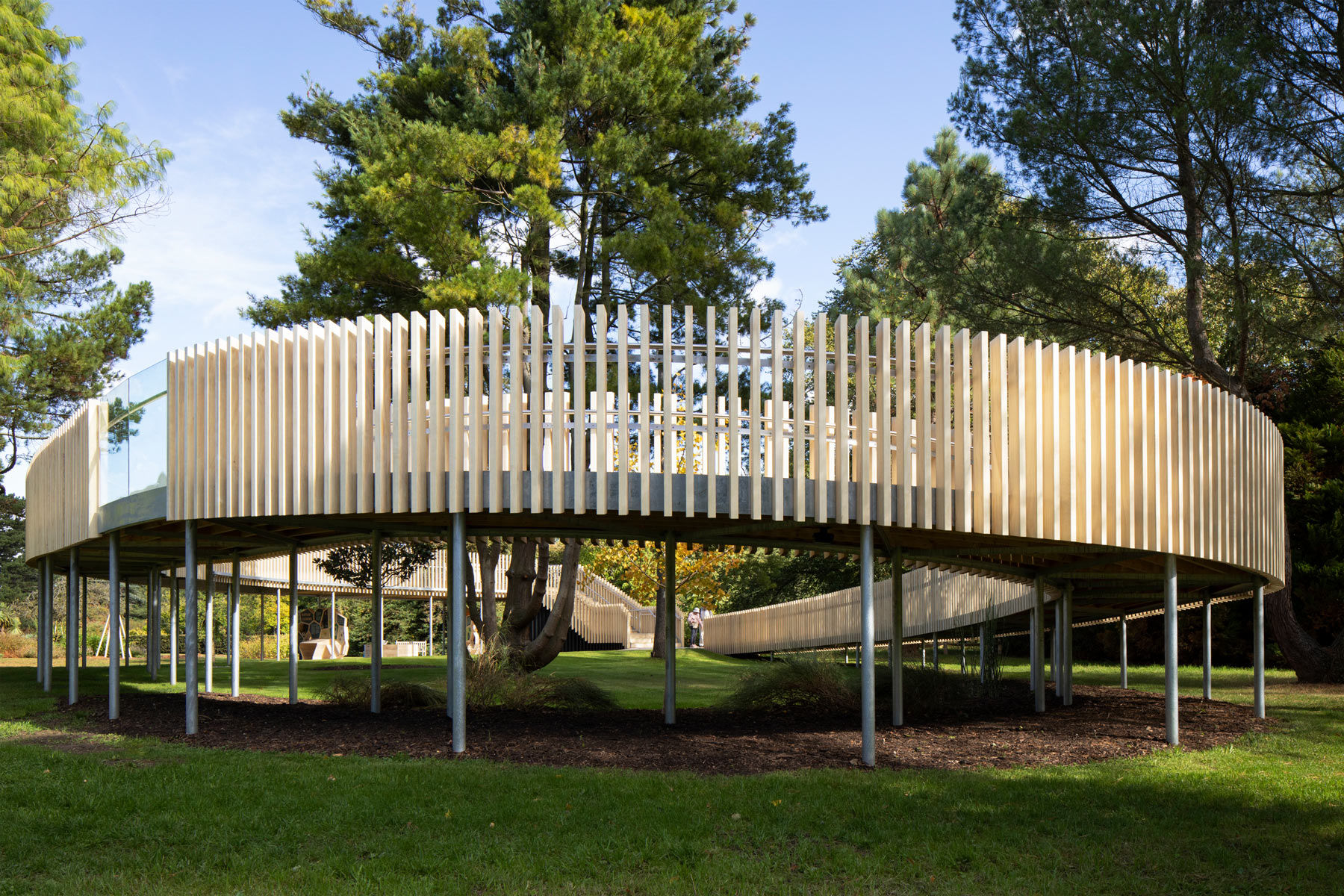
Concept
The overarching concept for the pavilion’s design is to serve as the focal point, anchoring the central value of the plaza. The entangled pathways surrounding the plaza are meticulously crafted to offer a unique and immersive experience, presenting fresh perspectives while preserving the essence of tradition. This synthesis of the new and the old ensures that visitors encounter a harmonious blend of innovation and time-honored values as they navigate the intricacies of the pavilion and its surrounding pathways.
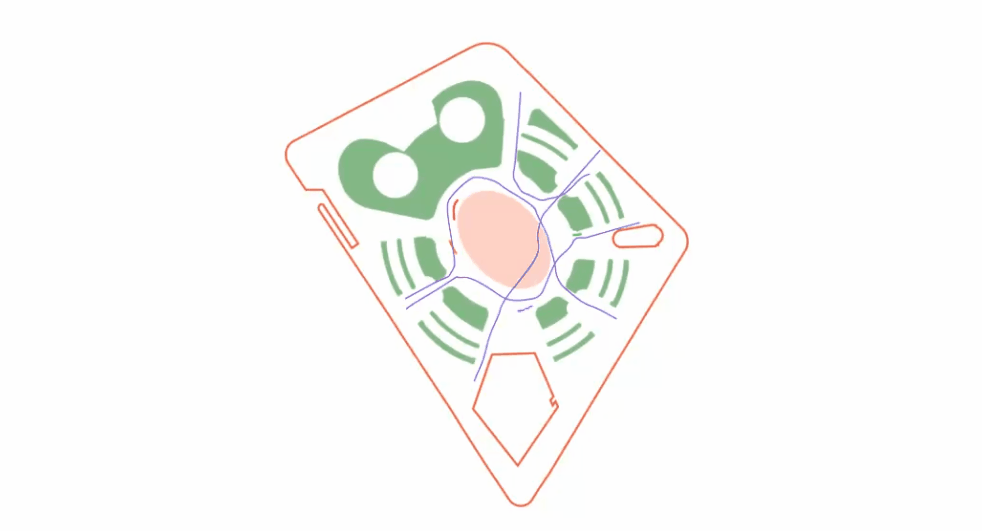
Design Process
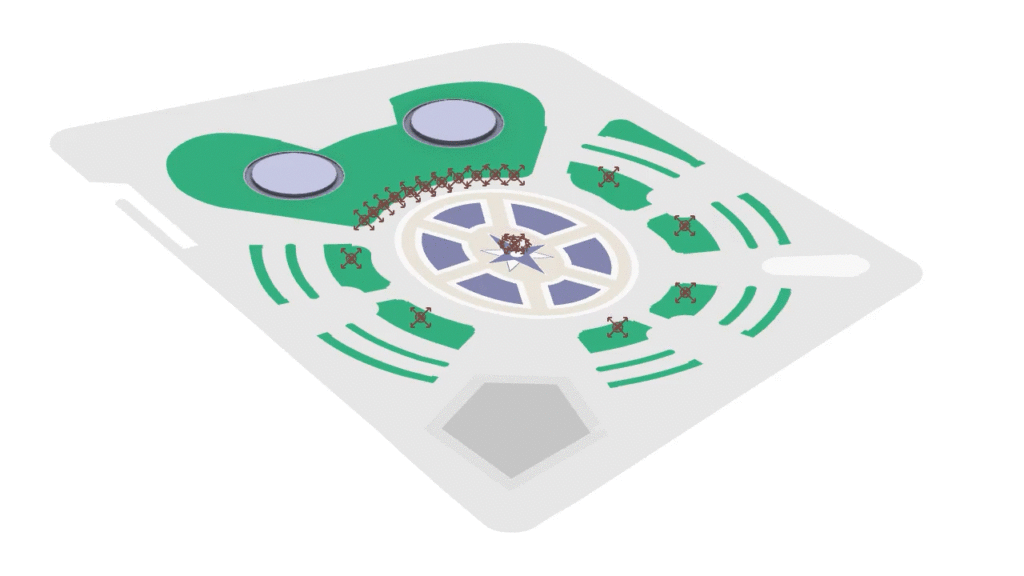
Creating the magnetic field towards the center of the plaza
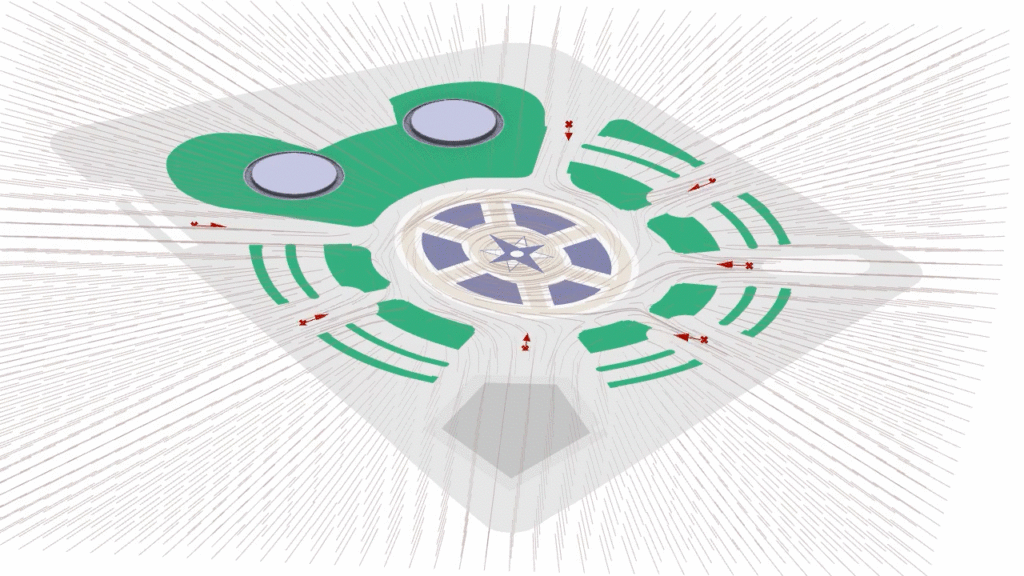
Use of Anemone Plugin to create a circulation bridge.
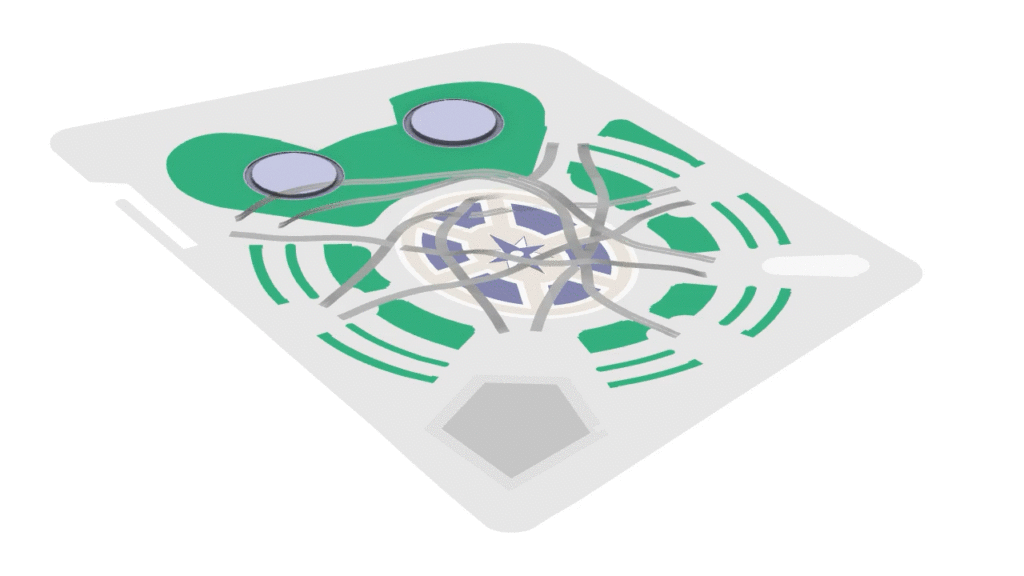
Create a opening between the conversion of one bridge to another.
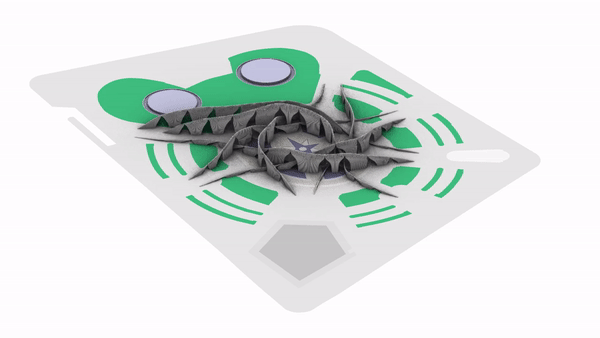
Addition of the Structure members
Visualization
